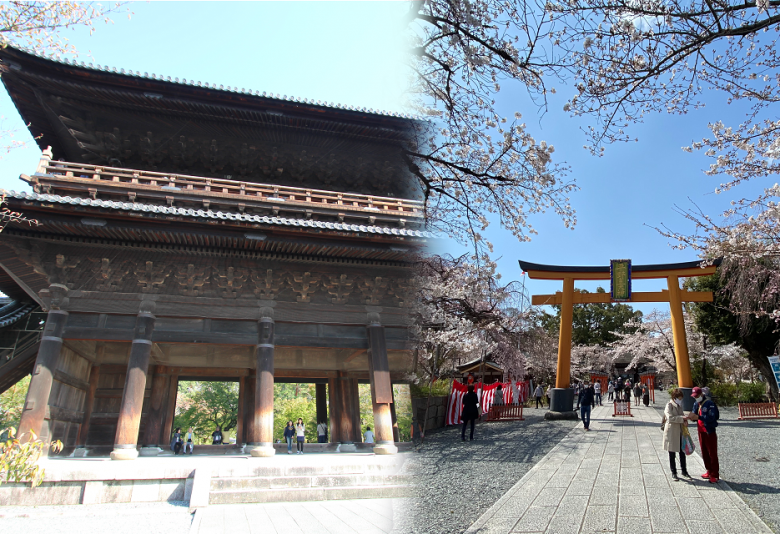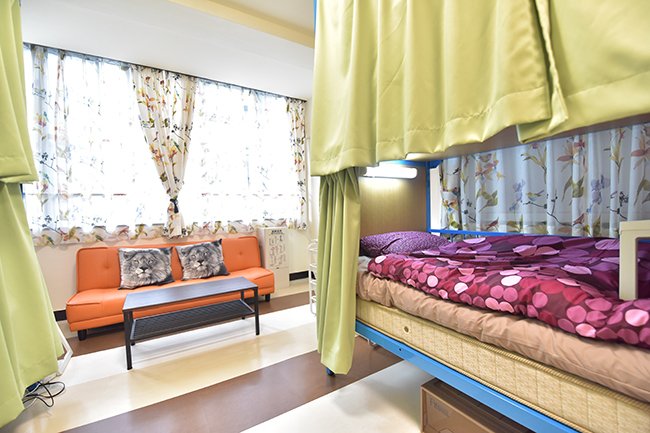
Living in Japan’s traditions: Difference between shrines and temples
While enjoying a stay in Japan, one activity that shall certainly be part of the trip is visiting shrines and temples. Particularly if you shall be staying in Kyoto, a city with over 2000 temples and shrines all around town.
But what is the difference between these two? This is a question that many foreign travelers ask themselves and it is good to be aware of them since manners also change slightly between the two.
So, if you already managed to find your Japanese school in Tokyo or in Kyoto, got hired at a local Japanese company or managed to get that internship at a Japanese firm, or maybe just want to travel around Japan and know more about the culture, contact us with your travel dates and while we search for the best share house, private apartment, guest house or vacation rental option for your needs, take a look at the rest of this Sakura Tip focusing on the differences that makes a shrine and a temple.
Religion
The first and most fundamental aspect is the religion to which each structure belongs.
Shrines are part of the Shinto beliefs, Japan’s original ancient religion which states that every aspect of nature has a soul. Therefore every mountain, rock, river, tree and forest has a living essence that shall be respected and worshiped.

A temple has its basis on the Buddhist religion, which entered Japan from China and India. Buddhist monks live in the temples and perform their activities here daily while taking care of the temple and its surroundings.
Entrance

The main difference shall be seen right at the entrance of each.
Shinto shrines have a large “torii” gate usually of vermilion red color indicating the entrance to sacred ground. Here it is also common to see two “komainu” (dog/lion like animals protecting the shrine) on the left and right of the entrance.

Temples have a more complex entrance structure but differ from temple to temple. Those of larger and more important level may have two “Nio” (wrathful looking muscular guardians) on each side protecting from evil.
Inside

After walking inside of a shrine, it is common to see trees, flowers and rocks among other natural aspects. A special characteristic is to see a large tree decorated with “shige”, zigzag-shaped paper streamers, also visible at some torii gates and smaller shrines, usually used for rituals.
Inside a shrine, there usually is a main object of worship, being either a large tree, a rock or even an area, sometimes relating to a special figure of Japanese history.

Inside a temple, although larger ones may also have trees, flowers and rocks, these are usually reserved to the garden area. Interestingly, gardens are very well maintained and some even gain great popularity, like the rock zen garden in Ryoan-ji Temple close to our SAKURA HOUSE KYOTO machiya houses.
The main object of worship is a statue of buddha located in the main hall. This also being the main area of prayer for visitors and major events.
Events

Both temples and shrines carry out events throughout the year, and some of them take place in either, like the “hatsumode” (first shrine/temple visit of the year).
However, it is common that weddings take place at shrines and funerals take place at temples, which matches with the other characteristic that temples also tend to be located by a graveyard.
Manners

One of the most important aspects to keep in mind when visiting a temple or shrine is the manners one shall take.
Some customs are the same, such as bowing before entering the temple/shrine grounds and also doing so once again when leaving facing the inside, and washing one’s hands at the “chozuya” (a basin filled with running water to purify oneself).
The main difference takes place when praying. We shall dig into the proper manner for each on a different Sakura Tip, but basically shrines require 2 bows, 2 claps, a prayer and 1 bow, while temples only require 1 bow, a prayer and 1 more bow (no clapping).
So there are the main basic differences between temples and shrines. One of the best way to know them though, is to visit them personally and carefully look at every aspect. This is our special recommendation to fully get a feeling of life in Japan.
SAKURA HOUSE
Nishi-Shinjuku K-1 Bldg. 2F
7-2-6 Nishi-Shinjuku, Shinjuku-Ku Tokyo, Japan
Postal code: 160-0023
Google map
- From Japan:
- 03-5330-5250
- From outside Japan:
- +81-3-5330-5250
- Mail:
- [email protected]
- Office hours:
- 8:50 am to 8:00 pm
We are open every day of the year.
- Tokyo time:
- 13:51(We are open now!)







